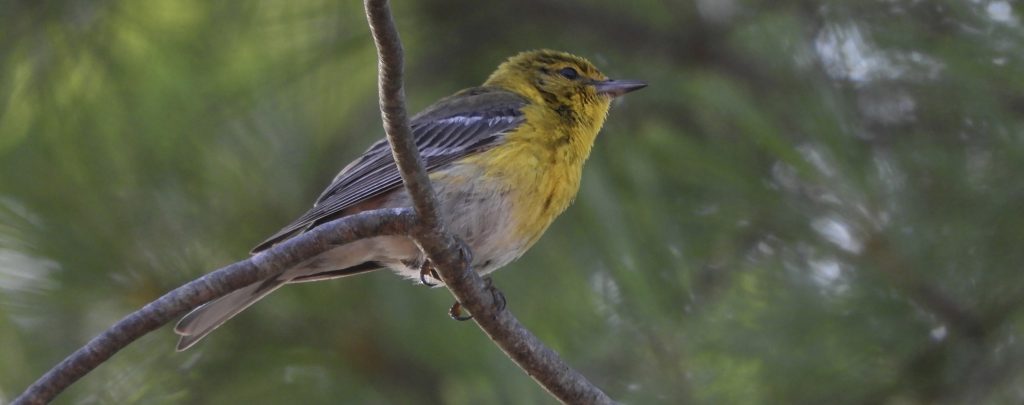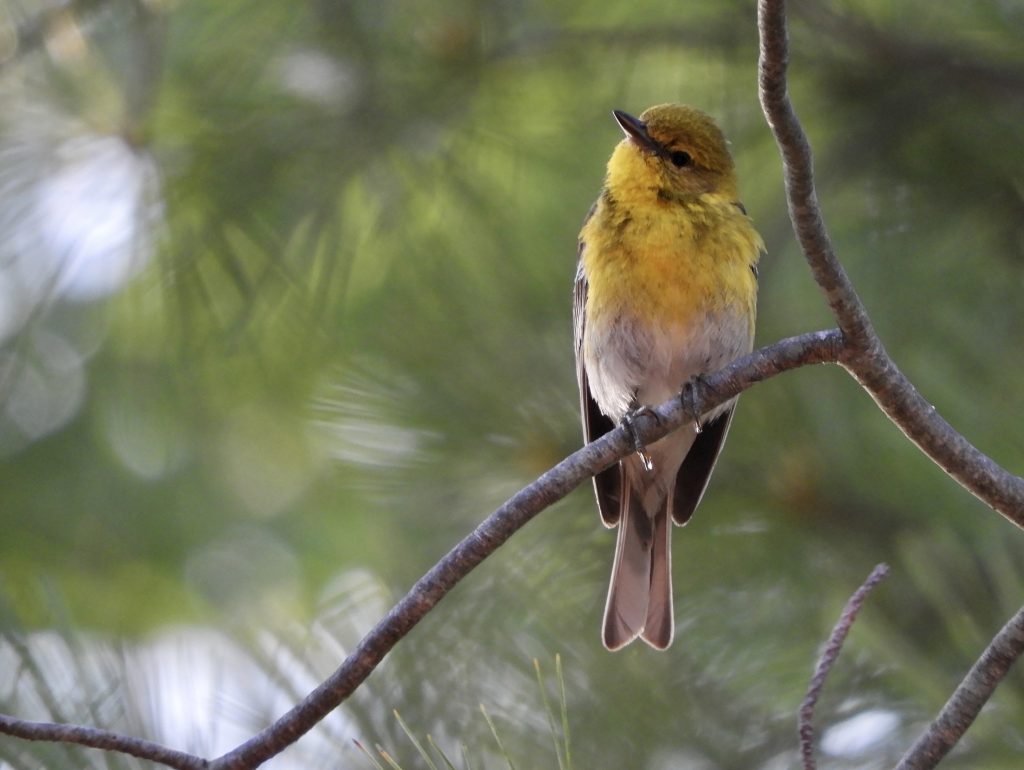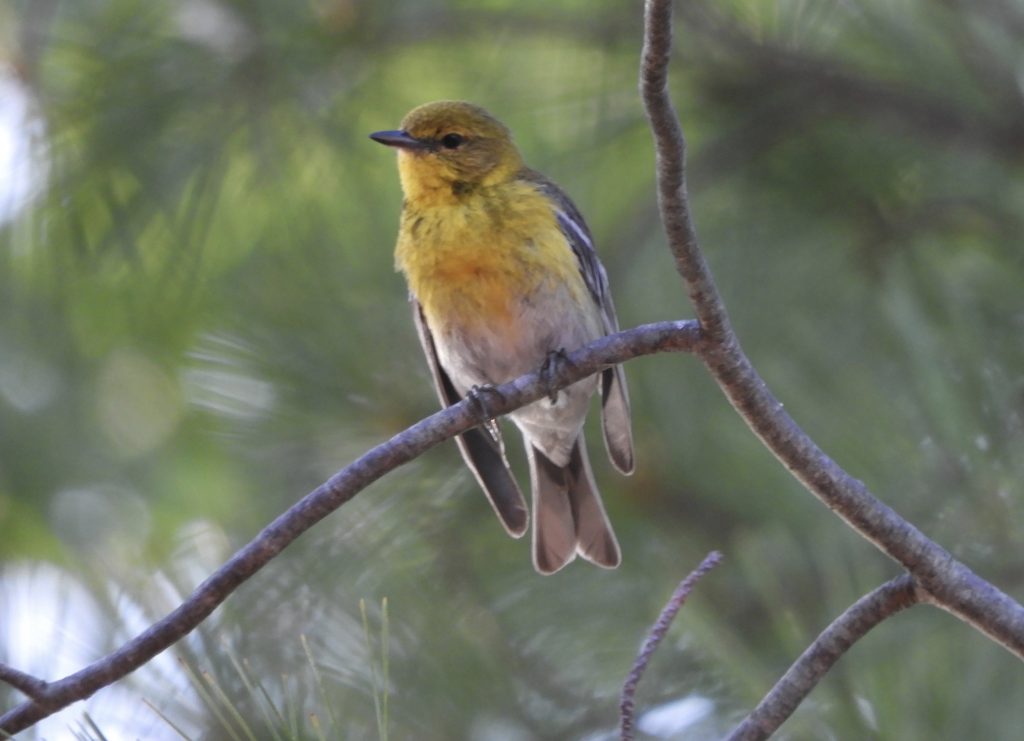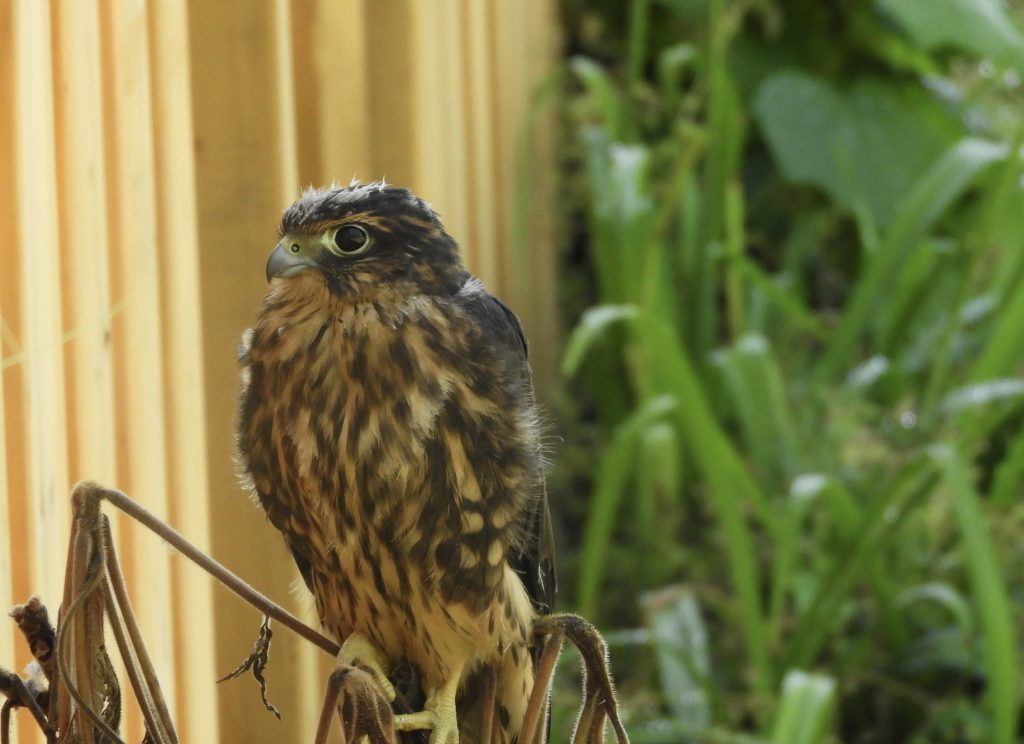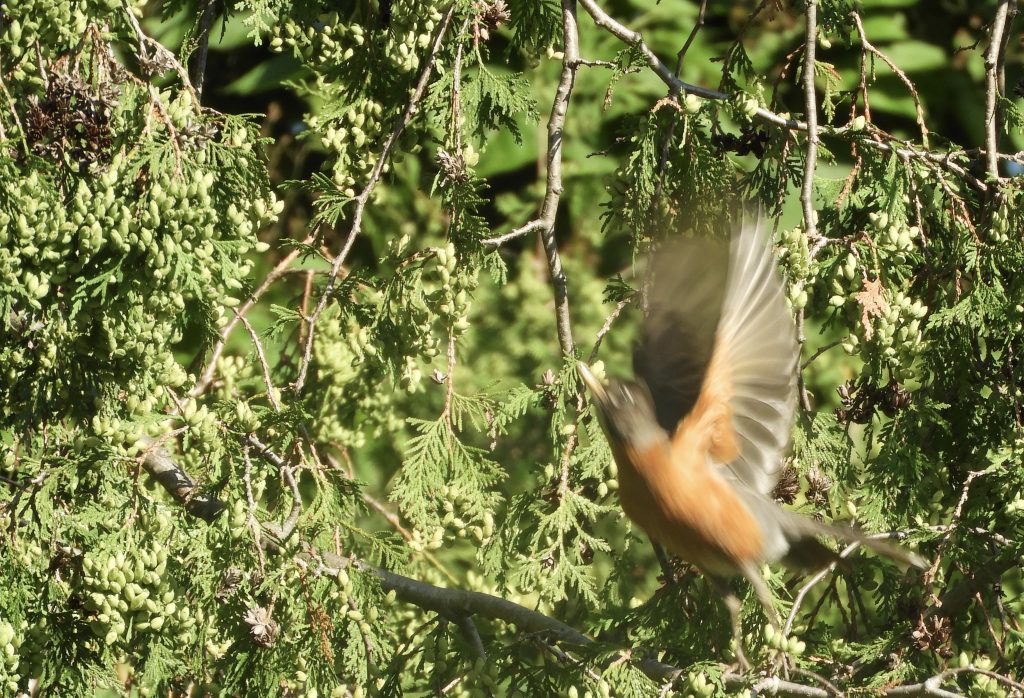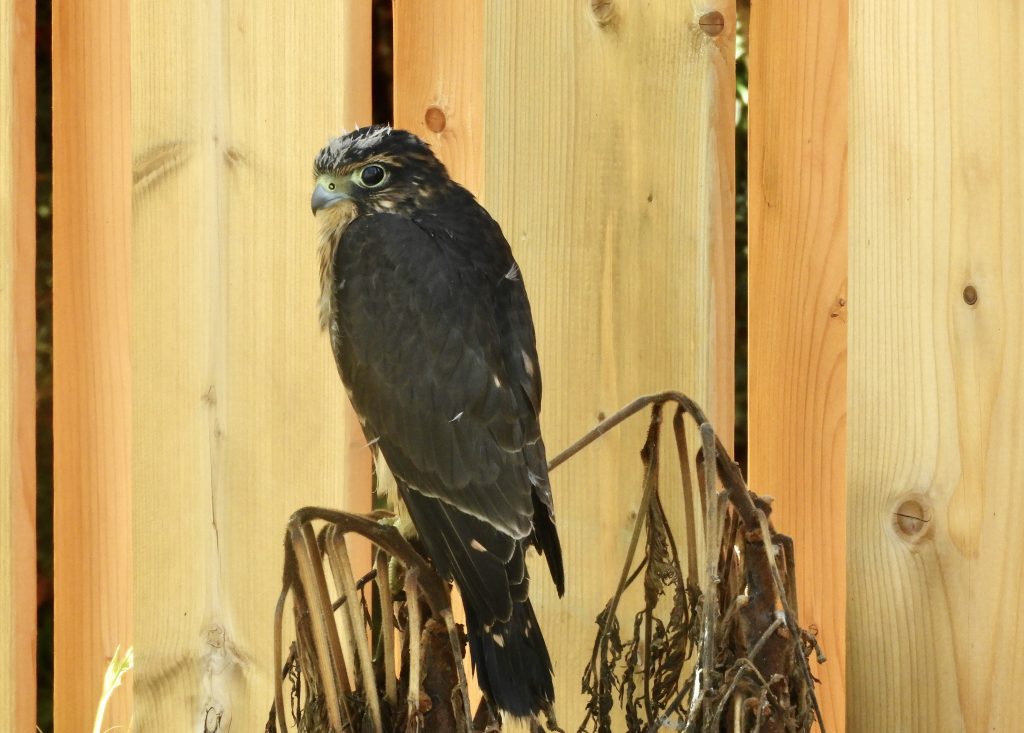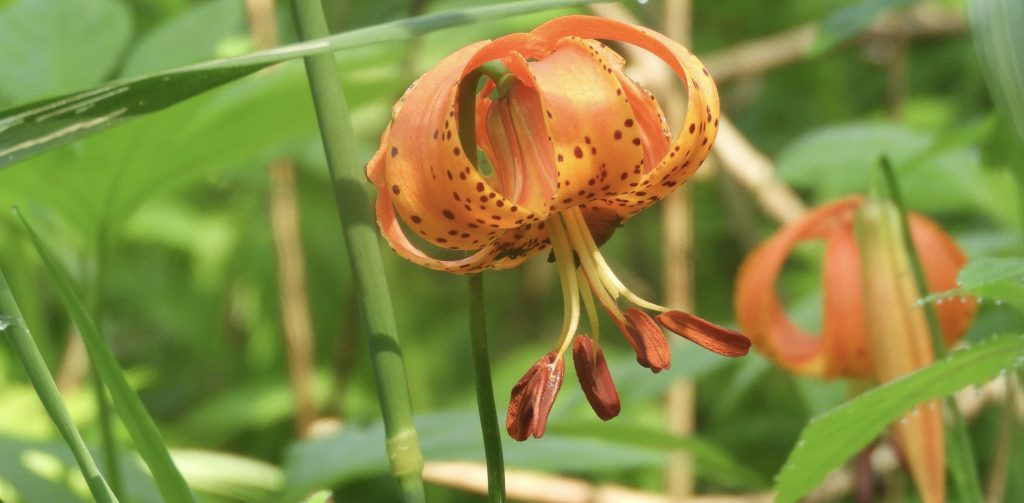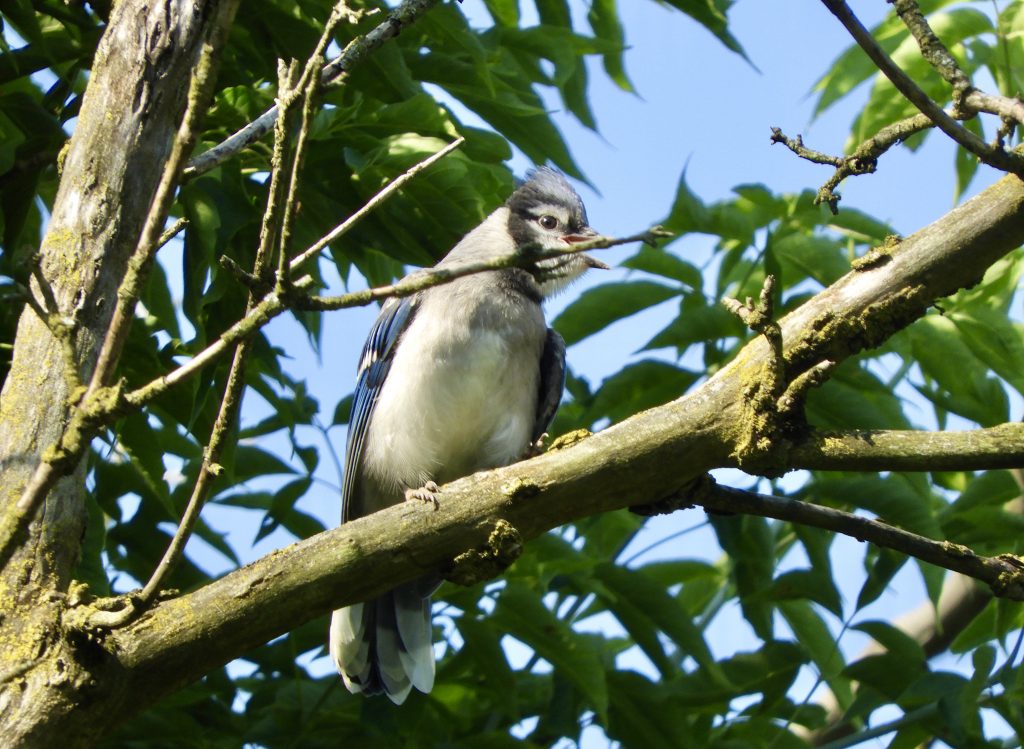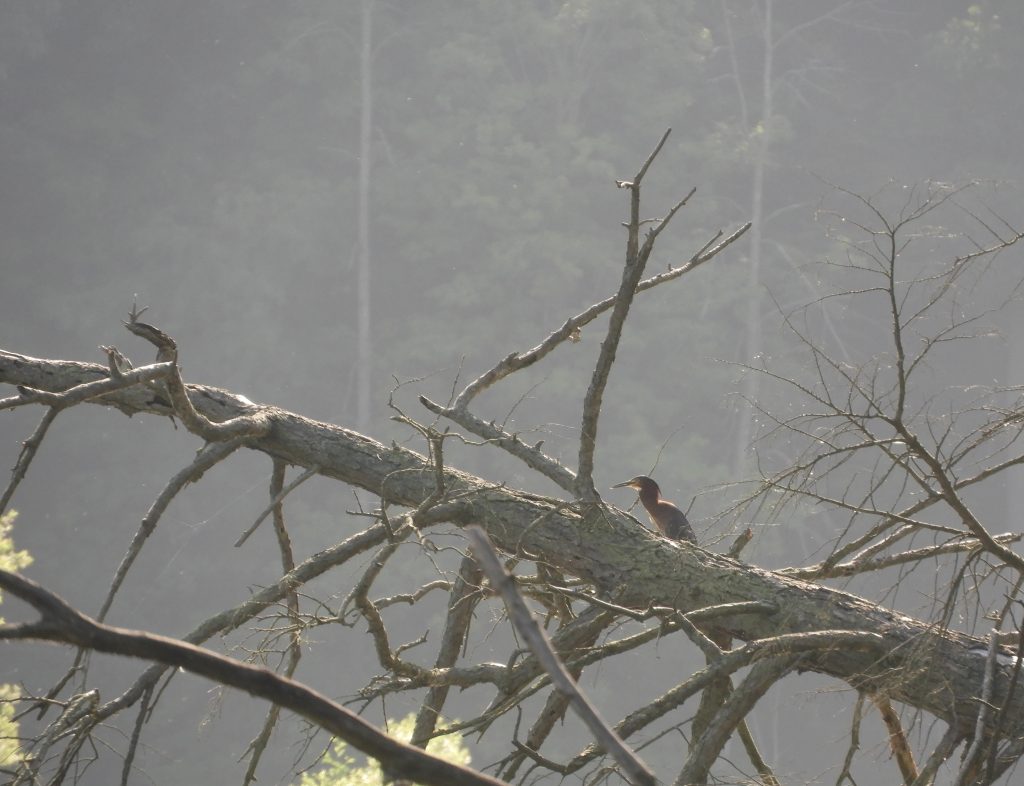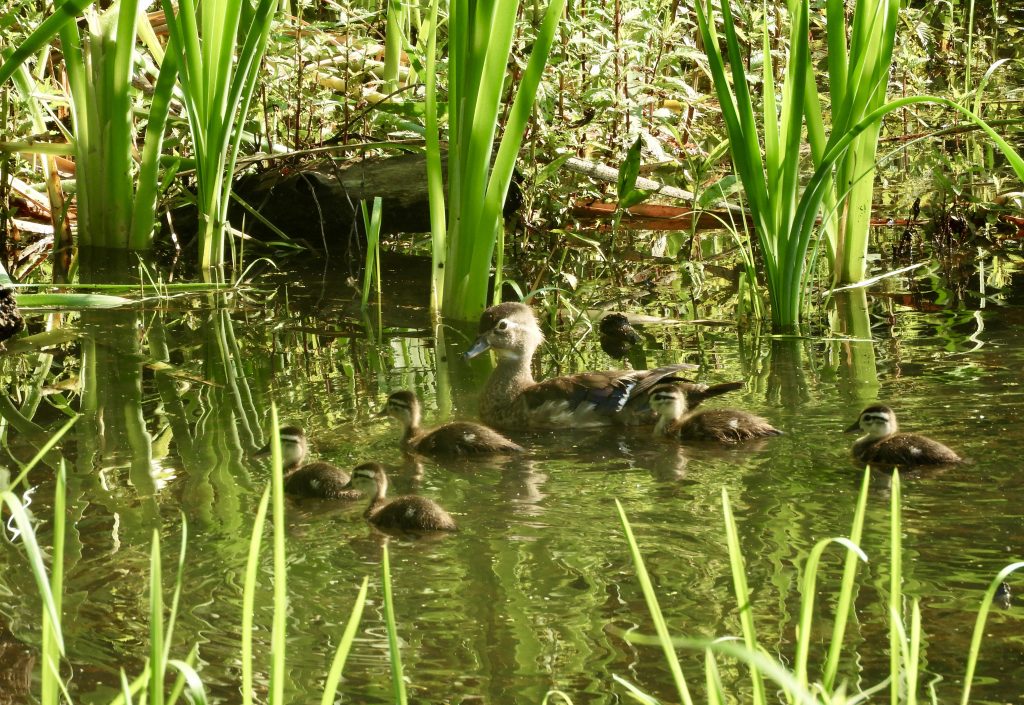 Hendrie Valley, Burlington. ON. September 1 2023. Today marked the start of another two months of counting birds. Our small team has been doing this for nine years: our task is to accumulate consistently gathered data suitable, we hope, for analysis or research on bird populations. We cover four defined transect routes, all on the properties of Canada’s Royal Botanical Gardens, all on untended natural lands, and each transect is distinct in its own mix of habitats. On a transect, our small team of competent birders will record all birds seen and heard. Today’s transect took me along a narrow, flat-bottomed valley with forested sides. The valley holds four shallow ponds, a modest creek and a few hiking trails. I call it simply ‘the valley’ in these posts. To see where it is, on Google Maps type: 74WG+GG Burlington, Ontario
Hendrie Valley, Burlington. ON. September 1 2023. Today marked the start of another two months of counting birds. Our small team has been doing this for nine years: our task is to accumulate consistently gathered data suitable, we hope, for analysis or research on bird populations. We cover four defined transect routes, all on the properties of Canada’s Royal Botanical Gardens, all on untended natural lands, and each transect is distinct in its own mix of habitats. On a transect, our small team of competent birders will record all birds seen and heard. Today’s transect took me along a narrow, flat-bottomed valley with forested sides. The valley holds four shallow ponds, a modest creek and a few hiking trails. I call it simply ‘the valley’ in these posts. To see where it is, on Google Maps type: 74WG+GG Burlington, Ontario
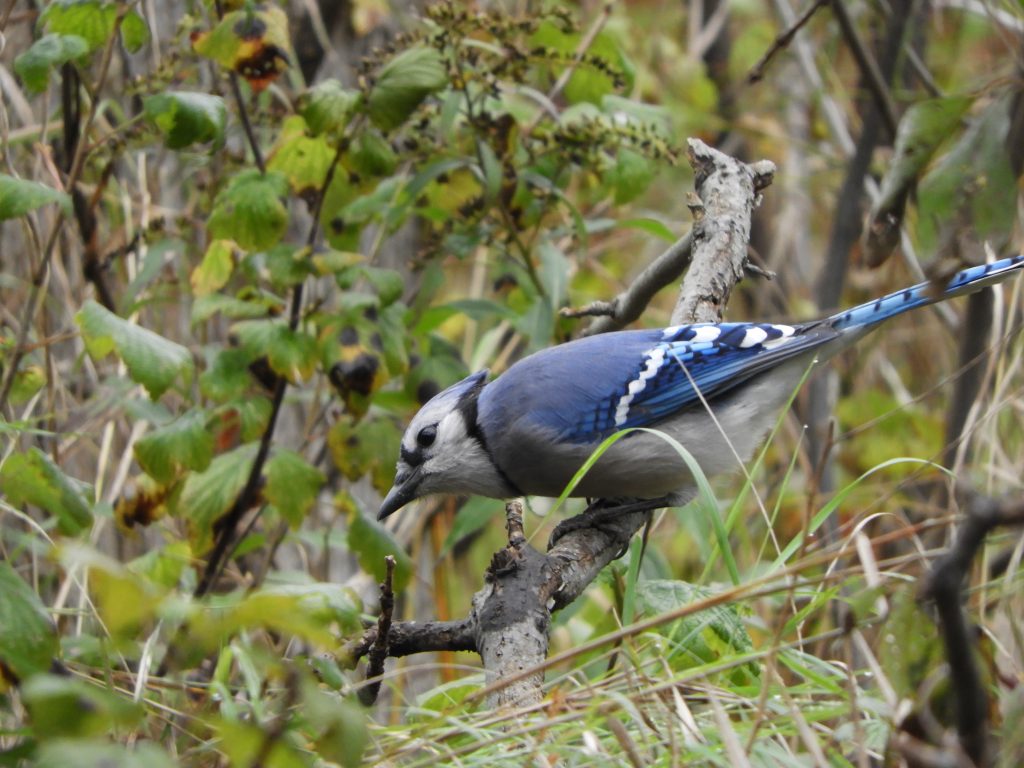
It was a Blue Jay morning in the valley today. The air was full of them and their calls, shrieks and mutterings, and they were flying across and around the valley, catching-up, socializing and congregating, I suspect in readiness for moving south. Whether they’ll move on tomorrow, next week or next month I don’t know. I suspect they’ll wander around for a while being under no urgent pressure to move. Food is plentiful and they’ll eat anything, animal or vegetable, something that made them unwelcome around nests with young, or anything smaller than themselves a bit earlier this year.
Still, Blue Jays are beautiful birds and I was pleased the share the morning with them.
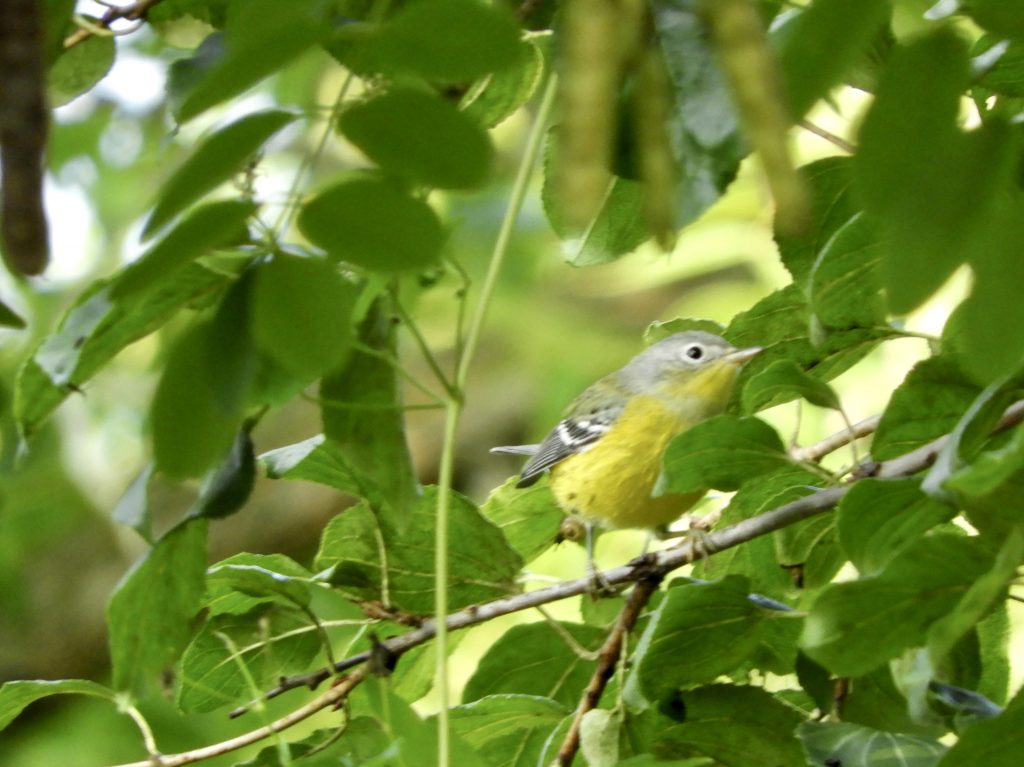
Better though, and more driven migrants was a small group of Magnolia Warblers. Life for them was about more than socializing, it was about feeding, urgently refuelling for the long journey ahead to Central America. I watched them foraging through the thick branches of trailside trees. They don’t sit still for many moments so I was lucky to get the photo above of one which, by the almost non-existent spotting on the flanks, I believe to be a first fall female.
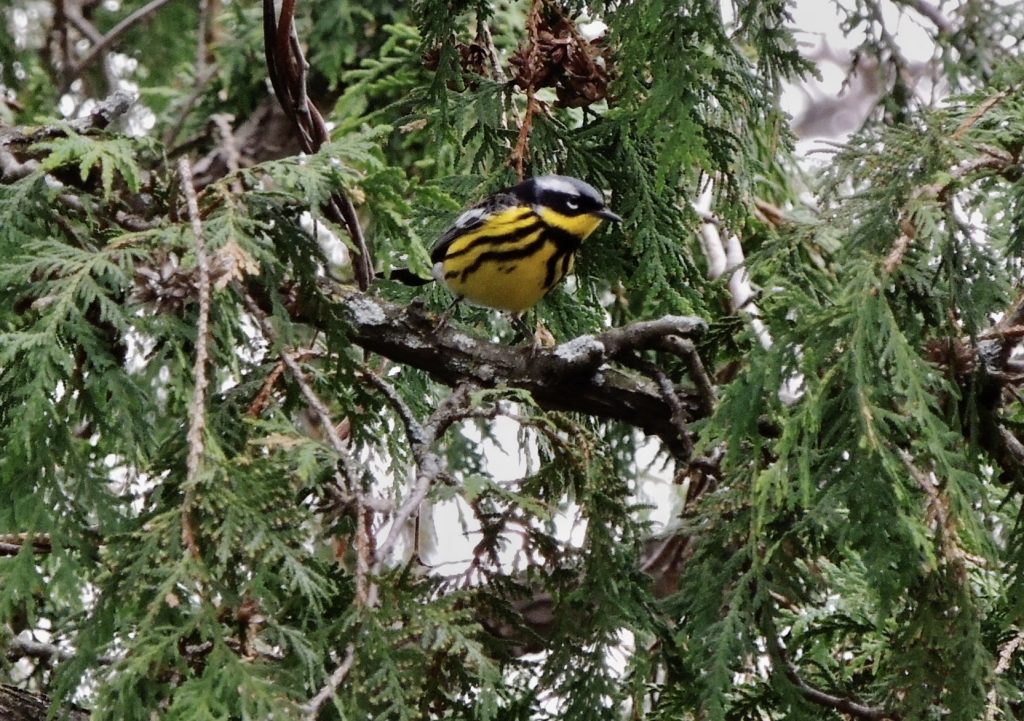 This, in contrast, is a spring male.
This, in contrast, is a spring male.
The Magnolia Warblers were in the company of a couple of Red–eyed Vireos and Great–crested Flycatchers, all doing the same thing, fattening up and moving along.
This first-of-the-season two-hour transect ended up with 29 species. Not bad, but there will be some much busier days ahead. I’m happy though with Blue Jays and Magnolia Warblers as My Birds of the Day.
 Hendrie Valley, Burlington. ON. August 27 2023. When I immigrated to Canada several decades ago I was thrilled to see an Osprey – a lifer. I have no recollection of exactly when or where, but it was a near-impossible, undreamt-of sighting for me. Throughout my British growing-up, Ospreys were absent and wrapped in vague mythology that had much to do with Britain’s centuries old land-ownership system.
Hendrie Valley, Burlington. ON. August 27 2023. When I immigrated to Canada several decades ago I was thrilled to see an Osprey – a lifer. I have no recollection of exactly when or where, but it was a near-impossible, undreamt-of sighting for me. Throughout my British growing-up, Ospreys were absent and wrapped in vague mythology that had much to do with Britain’s centuries old land-ownership system.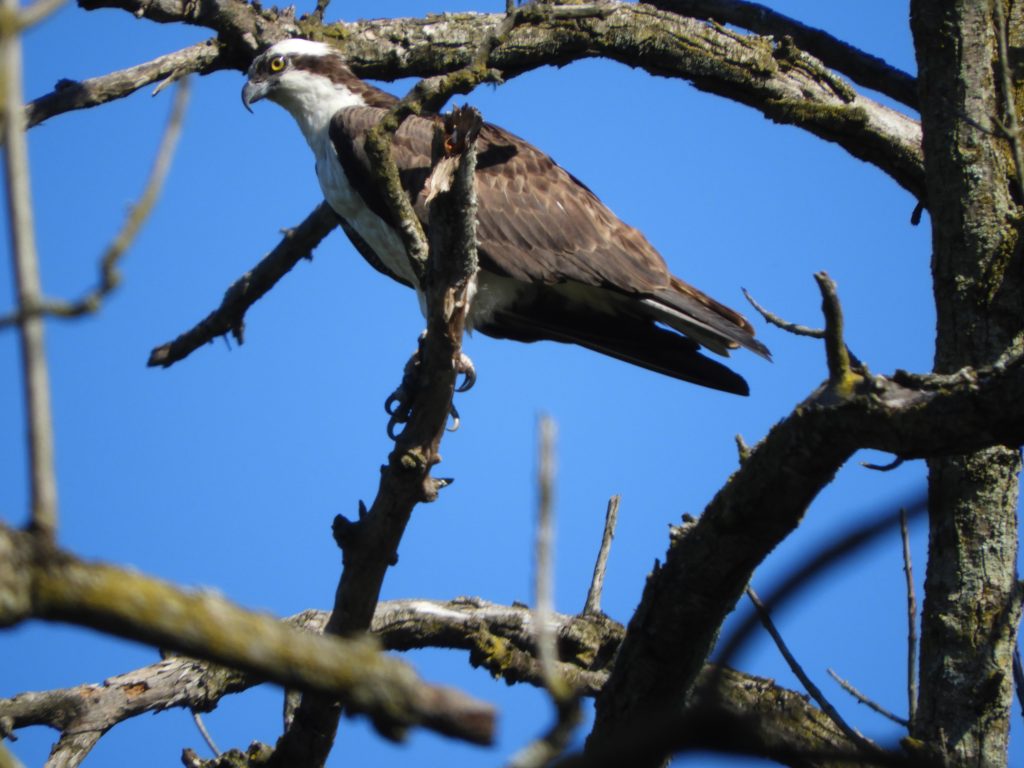
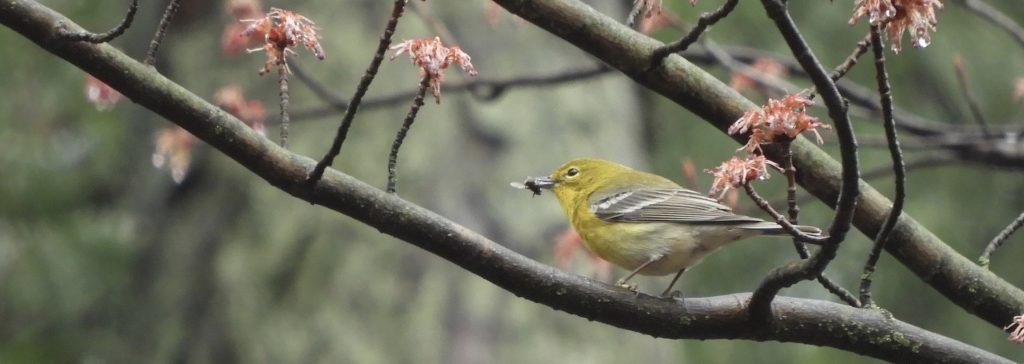 Mount Julian. ON. July 19, 2023. That quiet found in the hour as the sun rises is nowhere better experienced than on the shore of one of thousands of lakes scattered throughout the once-ancient forests of Ontario.
Mount Julian. ON. July 19, 2023. That quiet found in the hour as the sun rises is nowhere better experienced than on the shore of one of thousands of lakes scattered throughout the once-ancient forests of Ontario.